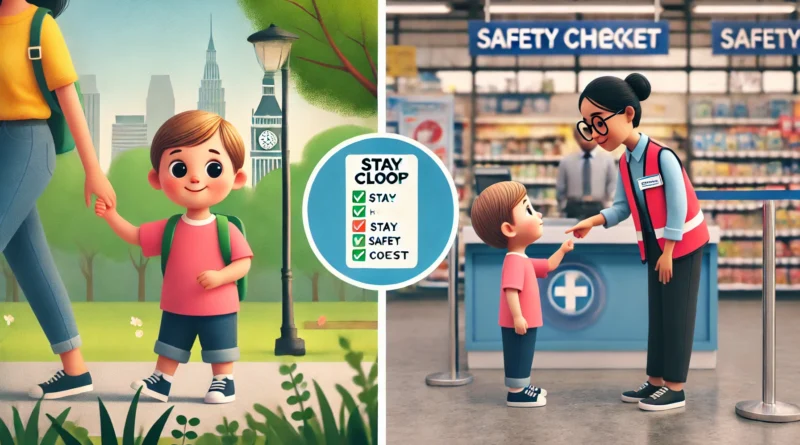How to Teach Young Children About Being Safe in Public Places
As children begin exploring the world beyond home, it’s essential to teach them how to stay safe in public spaces. From staying close in crowds to knowing what to do if they get separated, safety lessons give kids the confidence to explore while helping parents feel at ease. With visuals, repetition, and role-play, children can learn important safety habits in a calm and empowering way.
Why This Lesson Matters
- Promotes awareness and self-protection
- Prepares children for independence
- Reduces panic in unfamiliar situations
- Encourages trust in safe adults
- Builds early risk awareness and decision-making
Option 1: Teach the “Stay Close” and “Check-In” Rules
Activity Idea:
Explain that when in public (like a park or store), they should:
- Stay within sight of their grown-up
- Hold hands or stay “one step away”
- Check in before walking somewhere new
Use games like “Red Light, Green Light” to reinforce stopping and waiting.
What Kids Learn:
- How to move safely with a group
- The importance of staying nearby
- Respect for boundaries in public
Tool Suggestion:
Make a fun “Public Safety Checklist” with images they recognize—like holding hands, staying close, and listening to grown-ups.
Option 2: What to Do If You Get Lost
Activity Idea:
Practice scenarios like: “What would you do if you couldn’t find me in the store?”
Teach them to:
- Stay in place if safe
- Look for a safe adult (e.g. someone with a name badge or another parent with kids)
- Say their full name and a parent’s name
Role-play calmly and often so they remember what to do.
What Kids Learn:
- Staying calm in uncertain moments
- How to seek help from a trusted adult
- Essential safety steps and confidence
Book Suggestion:
The Berenstain Bears Learn About Strangers by Stan and Jan Berenstain — offers lessons on safety without causing fear.
Other Ideas to Reinforce Safety in Public
- Make it visual: Use a sticker chart to track good safety habits in public.
- Repeat before outings: “What’s our safety rule today?”
- Role-play at home: Turn safety learning into fun games.
- Personal info practice: Help your child memorize their full name, your name, and your phone number.
Final Thoughts
Teaching public safety to young children doesn’t have to be scary—it can be empowering and even fun. By helping them understand the importance of staying close, asking for help, and remembering important steps, you’re giving your child tools to feel secure, aware, and confident as they move through the world.
